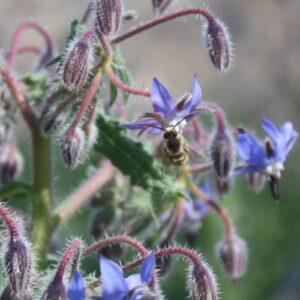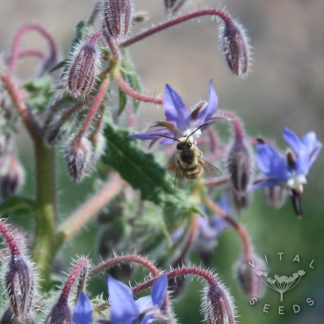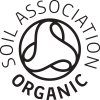How to grow Borage
Download PDF


Seed Sowing
Sow direct into a prepared seedbed in April or May after the last frost, spacing seeds 30cm apart. You can try sowing multiple seeds per 30cm and thinning once germinated to increase chances of success.
A second sowing can be made in late spring to extend the flowering window and ensure bees and other pollinators have an abundant source of nectar and pollen throughout summer.
Transplanting
Borage does not transplant well and works best if direct sown.
Plant Care
Keep the area weed-free and watered during hot spells. You can mulch around the plants to keep in moisture and prevent weeds. Deadhead to prolong flowering. Plants can grow up to 60cm and may need support, especially in windy growing conditions.
Challenges
Borage is generally pest and disease free but make sure to wear gloves when handling the plant as the leaves and stem have hairs which can irritate sensitive skin.
Blackfly are sometimes attracted to borage’s young growth, making it a fantastic companion plant to broad beans.
Harvest
You can expect flowers about 10-12 weeks after a spring sowing. Harvest individual flowers before they’ve just opened for use in cooking or decoration.
Culinary Ideas
The flowers are edible and add a refreshing cucumber-like taste to salads or as a decoration on cakes. Try freezing the flowers into ice cubes to jazz up your summer drinks.
Seed Saving
Harvest branches or the whole plant when you can see the first seeds starting to fall on the ground. Lay out to dry and then thresh, flail or rub to remove the seeds and store in a cool dark place.
Borage is a prolific self seeder so you may only need to sow it once to have it forever.



